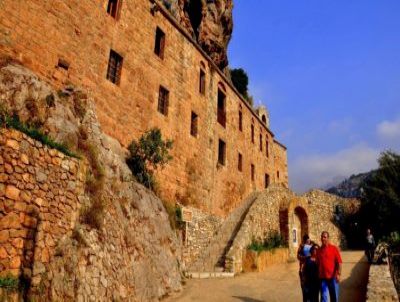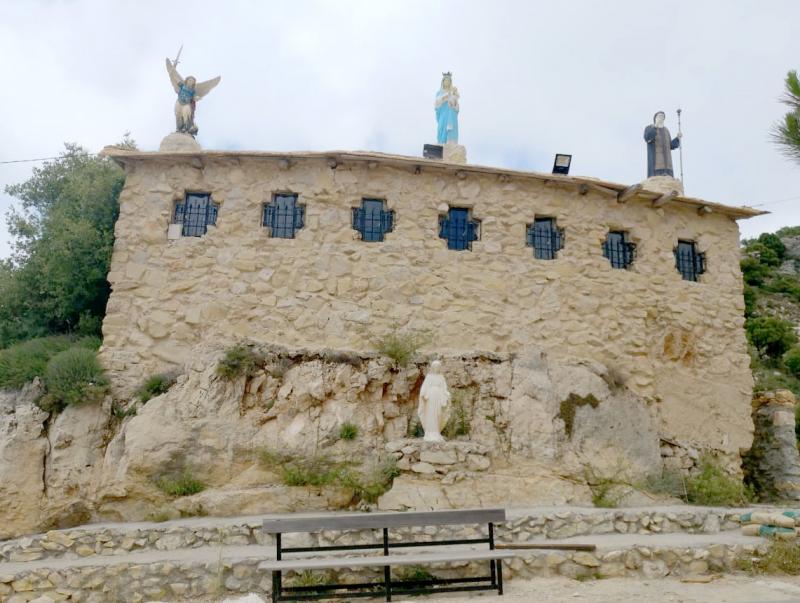RELIGIOUS TOUR
Visit Lebanon’s unique multicultural society
The Provinces of Beirut
The Cathedral of Saint George Maronite – Downtown Beirut
Built in a decade, from 1884 to 1894 according to the plans of the Italian architect Giuseppe Maggiore, the Metropolitan Cathedral is a replica of the Basilica of St. Mary Major in Rome, mainly in its facade, its architectural design form Cross and coffered ceiling. It was consecrated by Bishop Youssef Debs in 1894 and restored for the first time in 1953 with significant changes (cut transept and side arcades added). She hosted the deeds of our national life before knowing the turmoil years sombres1975-1990.En 1997 at the request of Bishop Boulos Matar Maronite Archbishop of Beirut, and in strict compliance with the Renaissance style of the period, Cathedral returns to its original shape cross: transept restored in its entirety with recovery windows. The central nave has a coffered ceiling in gilt double frame, wood, coated with gold on beige background. The walls are decorated with a coating of stucco and marble. As the altar is surmounted by a canopy period style with twisted columns. Behind the altar at the back of the choir, is installed”” cathedra, the chair of the Pope used during his visit to Lebanon. Consecrated after restoration by Cardinal Sfeir 24 April 2000 to 17 hours in the presence of the Patriarchs of the East and the papal legate Cardinal Lustiger, archbishop of Paris. Now renovated, it will remain at the heart of the city the seat of the Archbishop of Beirut.
St. Louis Capuchin Church – Downtown Beirut
Built in 1864, near the Grand Serail, newly restored bell tower stands in the middle with sting buildings downtown also given to new. Large church with colorful roses, it meets the needs of the community of the Latin rite.
Church of Saint Maron – Downtown Beirut
A Roman-style church built in 1875. It is known for its arcades, apses and cut stones. The arches resemble prostyls temples with their marble columns that give it illuminating splendor. Its beauty is reflected even by its stained glass windows depicting saints and white marble altar surmounted by a painting of Saint Maron and painted by El Daoud Corm (Saint Maron is celebrated on February 9, official holiday in Lebanon).
Al-Omari Great Mosque – Downtown Beirut
It is the largest mosque in Beirut. She took the name Al-Omari in honor of the Caliph Omar Ibn Al-Khattab. She was also known by the Futuh al-Islam Mosque (the conquests of Islam) or the Prophet’s Mosque Yahia. Under the reign of the Crusaders, it was transformed into a church before it was converted into a mosque by Saladin in 1187 (583 AH). The Crusaders resumed again and turn it into Cathedral 1197-1291 (593-690 AH), before it was finally conquered and converted into a mosque in 764 AH. by Emir Sunjur under the reign of Sultan Ashraf Khalil Muhammad son of Qalawun.
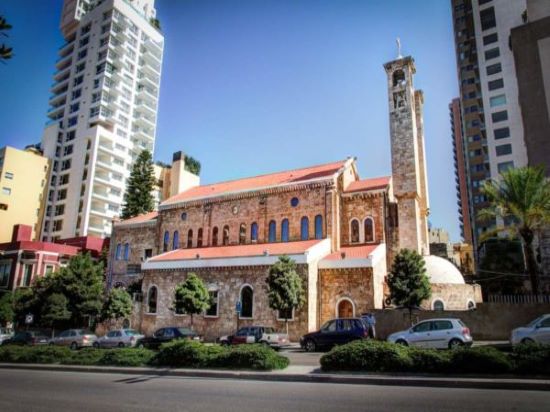
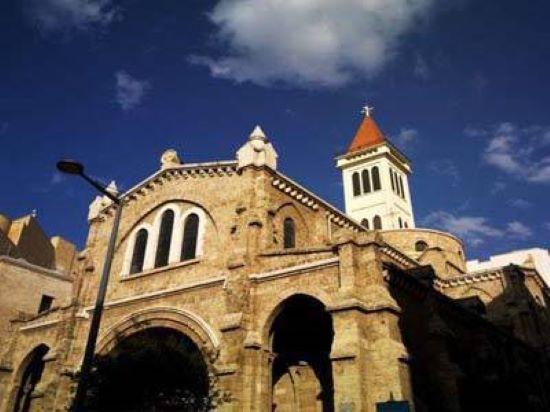
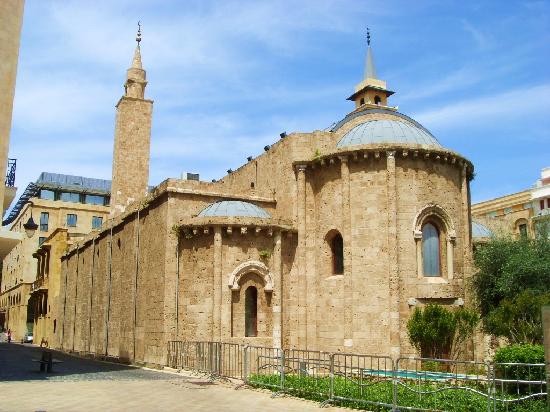
The Provinces of Sidon & Tyre
Saydet el-Mantara (our Lady of the Guardian) – Maghdousheh
On a hill overlooking the coast a few kilometers from Sidon stands the sanctuary of Saydet El Mantara or Our Lady of the Guardian (from the Arabic “Natra” which means “wait”).
According to tradition, Mary, mother of Jesus, followed her son on his journeys between Cana, Tyre, Sarafand, and Sidon. Popular Christian tradition in Lebanon says that it was on this hill in Maghdoushe that the Virgin awaited the return of Jesus from his apostolic wanderings.
The cave of Saydet El Mantara was made into a sanctuary by early Christians. Then in the 1720’s a villager discovered an icon of the Virgin on a small altar at the bottom of the cave-by then long forgotten and covered over. Today the site is marked by a small modern tower on which stands a statue of the Virgin holding the infant Jesus. An annual pilgrimage takes place in Maghdoushe every September 18 to mark the feast of the birth of the Virgin.
The church of Saint Elias – Sidon
The Maronite community built this church in 1610 on a piece of land donated by Jalal ed-din family. Today, it is used for other purposes. Its bell is the only thing that is preserved till now.
It was built in the 15th century (the cathedral of the Byzantine Antiochian archbishopric in Sidon) following the Christian worship that dates back to the 7th century. Its dome is the biggest in the city and its altar dates back to the Mameluke period. Its iconostasis dates back to the 18th century. In 1819, the church was divided into two parts: one for the Greek Orthodox community and another one for the Greek Catholics. The latter part is closed in order to be renovated. At the door of the Greek Orthodox bishop (part of the cathedral) is a small chapel dedicated to Saints Peter and Paul. The church tradition places the memory of a meeting between these two Saints (around 58 AD) according to the Acts of the Apostles.
The cathedral of Saint Nicolas – Sidon
This cathedral lies outside the boundaries of ancient Sidon near the Greek Orthodox archbishopric.
It dates back to 1896. The cathedral and the archbishopric contains frescoes (scenes from the old and new testaments) as well as mosaics (were put in 1996 in the front part of the altar) that date back to the 6th century. They were brought from a ruined church discovered in the village of Anan.
The Great Mosque el-Omari – Saida
It was named after the second orthodox caliph “Omar Ben el-Khattab”. It is one of the most beautiful architectural buildings of the thirteenth century, and the widest mosque of Sidon. It is located to the south west of the region, near the terrestrial castle of Sidon, over a hill overlooking the sea. Its architecture is a mixture between the two styles: Crusader and Mamluk. It was subject to many restorations and enlargements during the Ottoman period and the modern age.
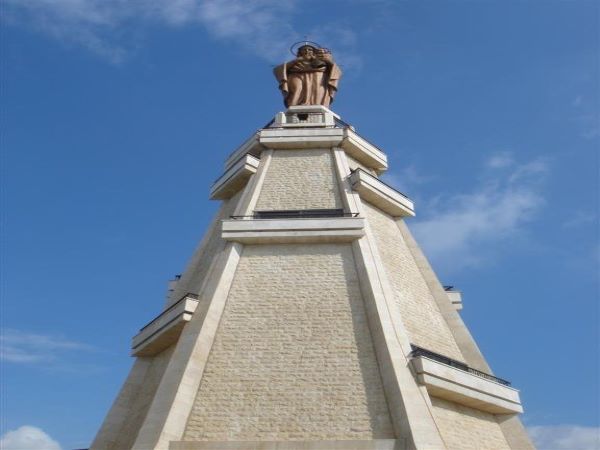
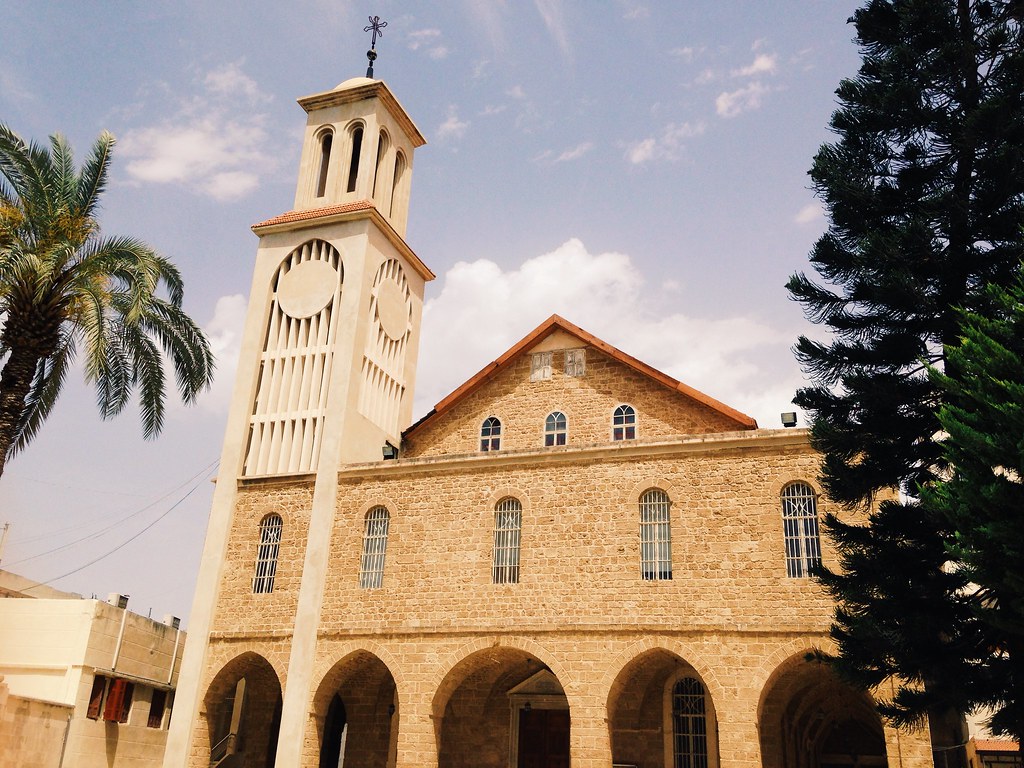
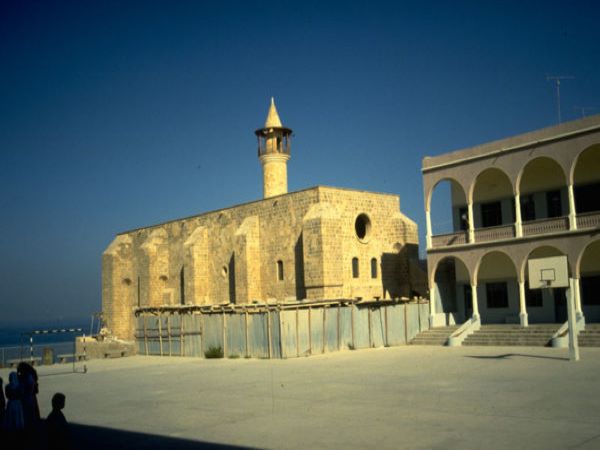
The Provinces of Harissa & Daroun
The Cathedral of our Lady of Lebanon – Harissa
On a hill that reverently overlooks the Bay of Jounieh and contemplates Beirut and the vast horizon stands the sanctuary of our Lady of Lebanon. It’s a place that shines with devotion to Saint Mary. Believers constructed this place to worship the Virgin Mother, our Lady of Lebanon. The statue of Saint Mary stands at the top of the structure. It is a white statue that touches the blue sky and is surrounded by roaming clouds. It has been here since 1908, resting on a cement foundation. The statue is reached by means of a spiral flight of stairs. Inside there is a small church where to thousands of believers come to pray and to hold marriage ceremonies.
The number of people is doubled in May, the month dedicated to Virgin Mary. Beside the ancient sanctuary, there is a modern, cathedral in which Pope John Paul II celebrated mass on his visit to Lebanon (Saturday May 10, 1997).
Cathedral of Saint Paul – Harissa
It is one of a number of places of worship found in Harissa. Near the sanctuary of our Lady of Lebanon there is the Monastery of the Catholic Missionaries of Saint Paul. (They founded their congregation in 1903).
Inside the monastery there is a church that has beauty of architecture. It roof has a semi-cupola. Inside the church there is mosaic of the Byzantine style on a golden background that represents the image of the Christ, the Apostles, Saint Mary carrying Jesus the Infant, fathers of the church and episodes from the Old and New Testaments.
Monastery of our Lady of Deliverance – el-cherfeh, Daroun , Harissa
In 1754, the sheikhs sold a piece of land to the priest Youssef Maroun el-Traboulsi provided that he builds a school to teach the principles of the Syriac and Arabic languages and the basics of the religion: the priest built the Monastery of our Lady of Deliverance in 1757 upon the terrace of the town of Daroun. That is why it is called the Monastery of the Terrace”.
In 1783, the patriarch of the Syriac catholics, Ignatios Mikhail Gerweh el-Halabi, arrived to Lebanon, escaping his persecutors in Bagdad.
He took refuge in this monastery. Later on, he bought it and named it the Monastery of the Chair.
The monastery began to enlarge. A clerical school was inaugurated in it in 1964. Today, it contains a library hosting manuscripts dating back to the Middle Ages and letters exchanged between the Superior fathers in the monastery and the Holy See, the patriarchs, the princes, the ambassadors and councils. It also contains around thirty thousand books related to religion, history, geography, liturgy in Arabic, Syriac, Turkish, Persian and Latin.
Some of them date back to the last two centuries.
The monastery lost around 18 manuscripts which were chosen by father Agustin Chiasca upon his visit in 1880. He took them to the Vatican library upon the approval of Patriarch Gerges Chalhat. Foreign orientalists and travelers visited the monastery in order to study and gain knowledge. They organized a training session for the bishops. They also supplied the library with material to preserve it from decay.
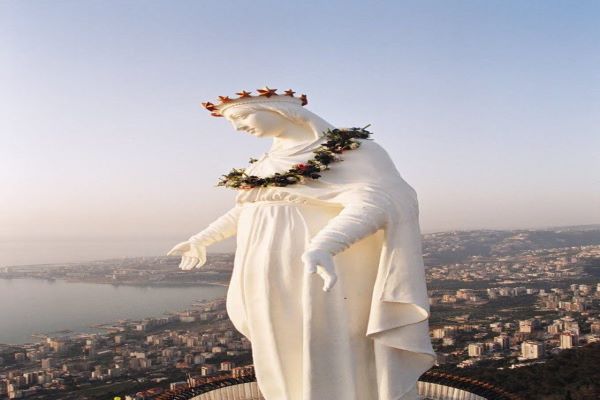
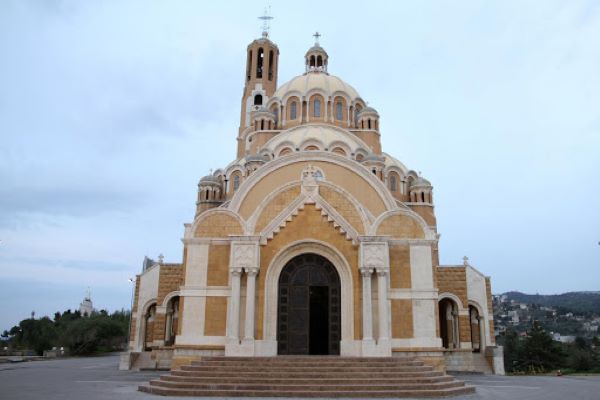
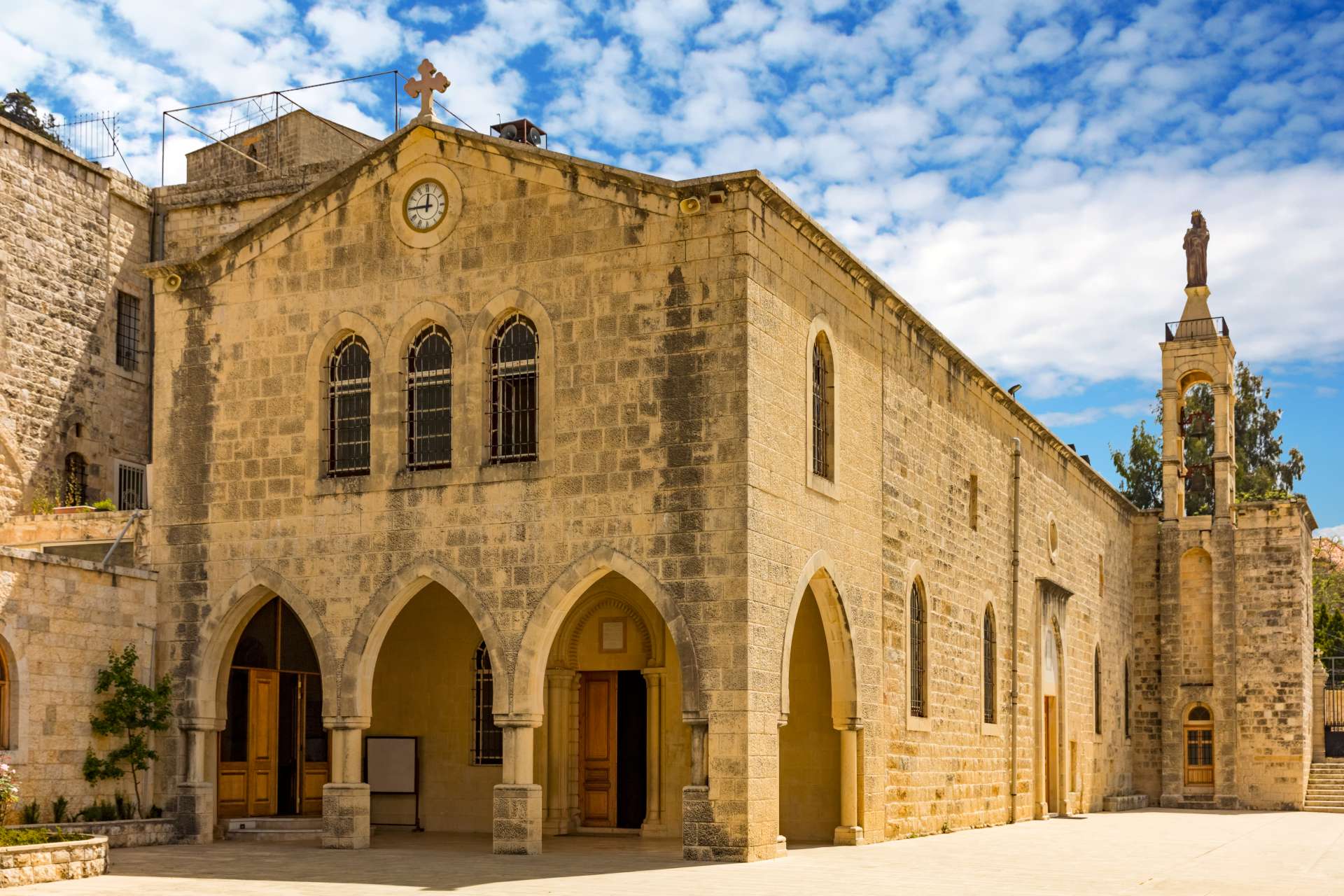
The Provinces of Byblos, St Charbel Annaya, and Lady of Nourieh
Deir Mar Maroun (Monastery of Saint Maroun) – Annaya – Santuary of Saint Charbel
In this monastery and within a unique ascetic frame, rest the remains of the Lebanese Saint Charbel Makhlouf who was born on May 8, 1828 in Bekaa Kafra (one of the highest villages in Lebanon in the region of the Cedars). Today he is worshiped as a saint and he is an example of piety, ohedience and sanctity. At an early age, his friends used to call him “the saint” because of his great piety. In 1875 he devoted his life to God and lived in hermitage on a hill that overlooks Ehmej. He lived there twenty three years until he died at the age of seventy while he was celebrating mass on Christmas Eve on the altar of the hermitage of Saints Peter and Paul on December 24/ 1898, where monks used to live before the present monastery was built in 1828.
The hermitage contains the ruins of an ancient chapel was renovated in 1811. Saint Charbel was beatified in 1965 and on October 9/ 1977, he was canonized.
The monastery of Saint Maroun Annaya is distinguished for its simple structure. The statue of Saint Charbel stands near the entrance. He is raising his hands towards heaven inside an iron rail. The church of
the monastery is always crowded with visitors and those who come to pray.
There is a museum that contains the robes of Saint Charbel and his prayer objects, adding to the place an atmosphere of reverence, piety and columns which makes it very close to God.
Covent of Saydet El-Nourieh (Covent our lady of Light) – Hamat
On the peak of a rocky cliff that has a splendid view stands a Greek Orthodox monastery known as Deir el Nouriyeh or Our Lady of the Light or Covent of our Lady of Light. It a miraculous Orthodox landmark which originated in the 17th century and was completed in the 19th century,. The church’s design of the basilica and the iconostasis is made of marble. There is a flight of stairs adjacent to the entrance of the church. It leads to a rocky cave that is hit by the wind and faced by the sea.
The myth that went around in the cave gave this name to the Covent: two sailors were about to drown in the stormy sea when Virgin Mary appeared in light and lead them safely to the shore.
Cathedral of Saint John-Mark – Jbeil (Byblos)
It was named after John Mark who was appointed by Saint Peter a bishop on Jbeil. He accompanied Saint Peter on a number of his travels and helped him in preaching the nations (the Acts of the Apostles). The cathedral dates back to the Crusader period and it lies by the seashore near the souk of Byblos among ancient houses. It has three chapels
Cathedral of Saint Stephen – Batroun
The diocese, which has Catholic bishops since the xvii th century, was canonically erected at the Maronite Synod of Mount Lebanon in 1736. United with the eparchy of Byblos since 1678, she became in 1848 the own seat of Patriarch Antioch of the Maronites . On June 9, 1990, she was separated from the eparchy of Byblos and attached to that of Joubbé and Sabra. Finally, on June 5, 1999, the eparchy of Batroun was detached from that of Joubbé and Sabra to become an autonomous ecclesiastical constituency. Since that date, it is no longer the proper seat of the Maronite patriarch.
Byblos Mosque
Near the historical castle of Byblos town, and in the middle of a garden covered with green grass, stands the Ottoman mosque of the town, in the place where the first Muslims built “el-Fateh Mosque” during the reign of the orthodox caliphs. It was built by the Ottoman sultan “Abdul Majid” in 1057AH/1648AC. The date is graved inside the mosque. Later on, it was renewed by the Emir “Yussuf el-Shehab” in 1197AH/1783AC.
A new section was added to the western side in which stands the door of the hexagonal minaret. This section is three steps higher than the main hall in the middle of which there is a dome. Under the dome stands a stone minbar of six steps. One can have access to the mosque by a flight of stairs overlooking the castle of Byblos and its old Suqs, in the quietness of the nature and the gentle breeze of the near sea.
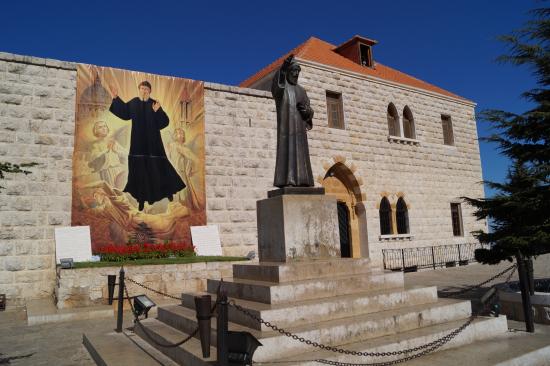
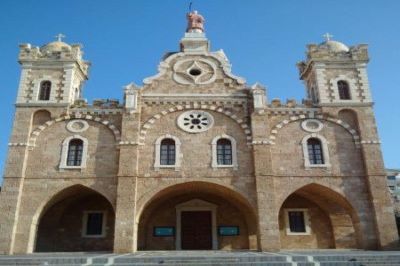
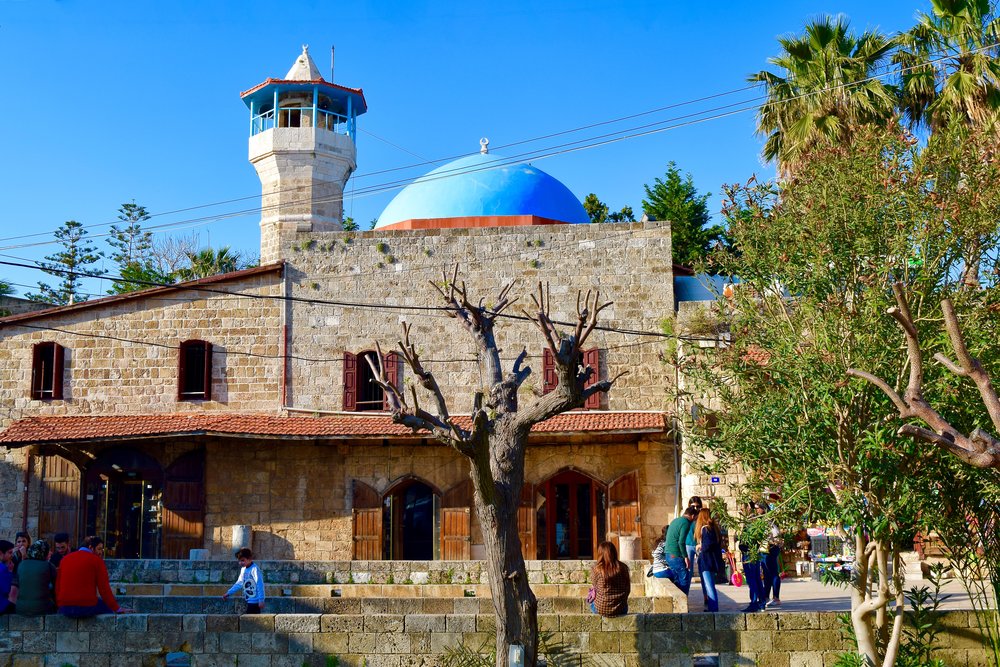
The Provinces of Qannoubine Valley
Deir Saydet Qannoubin (Monastery of our Lady of Qannoubin) – Qannoubin Valley
In a grandiose and almost wild setting overlooked by the small towns of Blawza and Diman, stands Deir Qannoubin, which from the 15th to the 19th centuries was the residence of the Maronite patriarchs. It is this monastery, (“Kenobion” means “monastery” in Greek) with its atmosphere of piety that gave its name to this part of the valley.
Built into the rock, the monastery’s church is a model of simplicity and austerity. Among its wall paintings, dating from the last two centuries, is a representation of the coronation of the Virgin by the Trinity, an inscription above it in Syriac is from a passage in the Song of Solomon: “Come from Lebanon, my betrothed and you will be crowned”.
A nearby annex to the monastery is the chapel of Saint Marina where 18 Maronite patriarchs are entombed. It is said that Saint Marina was falsely accused and performed long and hard penitence here. Later she was consecrated as the spiritual godmother of the valley.
Churches of Hardine
In Hardine there are around thirty monasteries churches and hermitages: Among the most important of them we mention: the monastery of Saint John El-Chaqf; the Monastery of Saint Stephan; the Monastery of Saint Sarkius (Sergins) el-Qarm (patriarchal seat); the Monastery of Saint Richa (a number of archbishops lived here. —- of them are known today); the Monastery of Saint Fauqa; the church of Saints Sarkis (sergius) and Bacchus (carved in the rock and as the church of Baptisms because it contains the baptisimal font where Saint Nimatallah el-Hardini was baptized; the church of Saint Challita; The church of Saint Nohra; The church of Saint Elias …
Deir Mar Youssef (The covent of Saint Joseph (Jralita) (Santuary of Saint Rafqa) – Jralita.
The Covent of Jralita is not far away from Kfifane. It lies at the heart of a splendid landscape surrounded by oak trees where silence and solitude overwhelm the beauty of the savage nature.
It is here that the Blessed Sister Rafqa is buried. Born on June 19, 1833, she entered the order of maronite sisters at the age of 39, aspiring to total devotion to God. Her life was one of continual prayer; she asked to participate in Christ’s passion and this grace was accorded her. Her Calvary was to last 29 years and she died a saintly death in 1914 at age 81. Buried in the shaded convent garden, her saintliness was quickly manifest. Her remains were moved to the tomb that still remains in the church and soon it became a place of pilgrimage. On November 17, 1985 she was beatified by the Holy See.
On 10/6/2001, the pope John Paul II proclaimed her saint.
